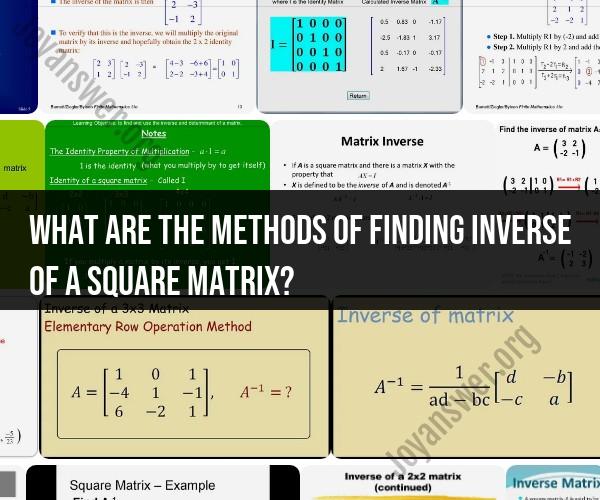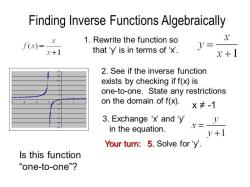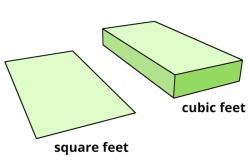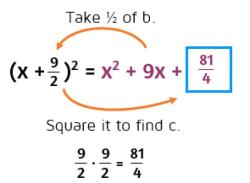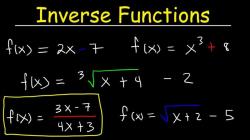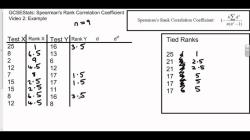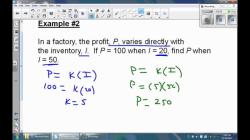What are the methods of finding inverse of a square matrix?
Finding the inverse of a square matrix is an essential operation in linear algebra. There are several methods to find the inverse of a square matrix, and the choice of method often depends on the size of the matrix and its properties. Here are some common methods:
Gaussian Elimination: This is one of the most widely used methods to find the inverse of a matrix. The idea is to transform the original matrix into an upper triangular form (Row Echelon Form) using elementary row operations, and then back-substitute to find the inverse. If successful, you'll end up with an identity matrix on the left and the inverse matrix on the right.
Matrix Adjugate Method: This method involves calculating the adjugate of the matrix, which is the transpose of the cofactor matrix. The adjugate method is suitable for small matrices and can be computationally intensive for larger matrices.
Elementary Row Operations: For smaller matrices, you can use elementary row operations to manipulate the matrix until it becomes the identity matrix on the left side, with the inverse on the right side. This method is similar to Gaussian elimination but is often done manually.
Cramer's Rule: Cramer's Rule provides a formula for each element of the inverse matrix using determinants. It's a useful method for finding the inverse of small matrices but can be computationally expensive for larger ones.
Matrix Inversion Lemma: This method is particularly useful for updating the inverse of a matrix when you make small changes to the original matrix. It's commonly used in numerical simulations and optimization problems.
LU Decomposition: LU decomposition involves factoring the original matrix into a product of a lower triangular matrix (L) and an upper triangular matrix (U). Once you have LU decomposition, finding the inverse is relatively straightforward.
Eigenvalue and Eigenvector Method: For diagonalizable matrices, you can find the inverse using eigenvalues and eigenvectors. This method is often used in advanced linear algebra.
Numerical Methods: For large matrices, finding the exact inverse can be impractical. In such cases, numerical methods like iterative techniques or using specialized software packages may be more efficient.
The method you choose depends on the specific characteristics of your matrix and the resources available. Some methods, like Gaussian elimination and LU decomposition, are more practical for hand calculations, while others, like numerical methods, are better suited for large or complex matrices. Additionally, the existence of an inverse depends on the matrix being invertible (i.e., having a non-zero determinant).
